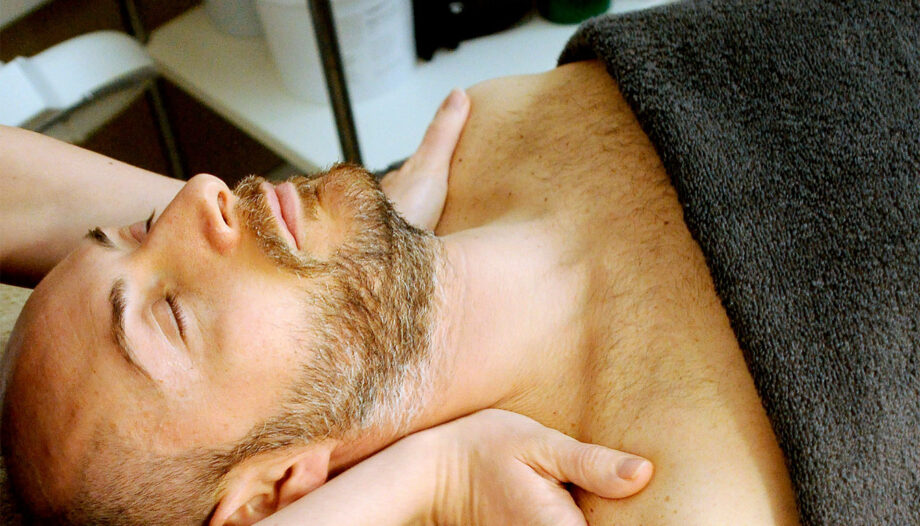Massage therapy has gained significant popularity in the UK, with one in five adults trying it annually. This growing interest is backed by research highlighting its numerous health benefits. From reducing pain to promoting relaxation, it has become a trusted complementary therapy.
Studies show that regular sessions can significantly improve conditions like back pain and stiffness. For instance, an eight-week programme demonstrated notable improvements in knee osteoarthritis pain and mobility. Additionally, research from the University of Wisconsin reveals that it reduces cortisol levels while increasing serotonin, contributing to better overall health.
The NHS recognises its value as a complementary treatment, further solidifying its credibility. Whether you’re seeking relief from chronic pain or simply looking to unwind, the evidence suggests it’s worth considering. For a deeper understanding of its principles, explore what massage therapy entails.
Key Takeaways
- One in five UK adults tries massage therapy annually.
- It reduces cortisol levels and increases serotonin, improving overall health.
- Eight weeks of therapy can enhance knee osteoarthritis pain and mobility.
- The NHS recognises it as a complementary treatment.
- It offers benefits for chronic pain, relaxation, and stiffness.
What Is Massage Therapy and How Does It Work?
Massage therapy is more than just relaxation—it’s a regulated healthcare practice in the UK. It involves the manual manipulation of soft tissues, including muscles, tendons, and ligaments. This hands-on approach aims to alleviate discomfort, improve circulation, and promote overall well-being.
With a history spanning over 5,000 years, massage has evolved from ancient rituals to a modern clinical practice. Today, it’s recognised as a complementary treatment by healthcare professionals. Whether you’re seeking relief from chronic pain or simply looking to unwind, it offers a holistic approach to health.
Understanding the Basics of Massage Therapy
Massage therapy encompasses over 80 different styles globally, each with unique techniques and benefits. In the UK, it’s a regulated practice, ensuring that therapists meet strict standards of training and professionalism. This ensures a safe and effective experience for clients.
One of the most common styles is Swedish massage, which uses gentle pressure and flowing strokes to relax the body. In contrast, Shiatsu, a Japanese technique, focuses on applying pressure to specific points to balance energy flow. These diverse methods cater to individual needs and preferences.
The Science Behind Massage Therapy’s Effectiveness
Research from the University of Miami highlights how moderate pressure stimulates pressure receptors in the body. This triggers a cascade of physiological responses, including the reduction of IL-10 and regulation of vasopressin. These changes contribute to reduced inflammation and improved stress management.
Tiffany Field’s studies further explain how massage activates the parasympathetic nervous system. This promotes relaxation, enhances blood flow, and supports the body’s natural healing processes. Such findings underscore the scientific basis for its widespread use in healthcare settings.
Does Massage Therapy Work? Evidence-Based Insights
Recent studies highlight the growing evidence supporting the effectiveness of massage therapy. From alleviating chronic pain to improving mental health, the benefits are increasingly backed by scientific research. Let’s explore the findings in detail.
Research on Massage Therapy for Pain Relief
One of the most compelling areas of research focuses on pain management. A landmark study involving 401 patients found that ten sessions were more effective than medication for back pain. Published in the Annals of Internal Medicine, this study underscores its potential as a non-invasive treatment option.
For those with hand arthritis, daily self-massage led to a 57% reduction in pain. Similarly, a review in PLoS One revealed that over five weeks of sessions reduced fibromyalgia symptoms by 40%. These findings align with the pain gate theory, which suggests that massage can block pain signals to the brain.
Massage Therapy for Mental Health and Relaxation
Beyond physical benefits, it also supports mental well-being. Research shows a 17% reduction in anxiety among cancer patients after regular sessions. This is attributed to measurable changes in cortisol and serotonin levels, which are linked to stress and mood regulation.
As Tiffany Field, a leading researcher, explains:
“Massage activates the parasympathetic nervous system, promoting relaxation and reducing stress.”
These effects make it a valuable tool for managing conditions like depression and anxiety.
Key Studies at a Glance
| Study | Condition | Findings |
|---|---|---|
| Annals of Internal Medicine (2011) | Back Pain | 10 sessions outperformed medication |
| PLoS One Review (2014) | Fibromyalgia | 40% symptom reduction after 5+ weeks |
| University of Miami Study | Anxiety in Cancer Patients | 17% reduction in anxiety levels |
While the benefits are significant, it’s important to note that some effects may diminish over time. For instance, a back pain study found that improvements plateaued after 12 months. Nevertheless, the evidence supports its role as a complementary therapy for both physical and mental health.
Health Benefits of Massage Therapy
The health benefits of massage therapy extend far beyond simple relaxation. It’s a versatile practice that addresses physical discomfort, mental stress, and even post-injury rehabilitation. Let’s explore how it can make a difference in your daily life.
Reducing Back Pain and Muscle Stiffness
Chronic back pain and stiffness are common issues, but massage therapy offers a natural solution. Techniques like myofascial release target deep muscles and connective tissues, alleviating tension and improving mobility. A 2014 study in the Scientific World Journal found that deep tissue massage was as effective as NSAIDs for reducing pain.
Improving Sleep and Reducing Anxiety
Struggling with sleep or feeling overwhelmed? Massage therapy can help. By boosting serotonin levels, it enhances REM sleep, leading to better rest. An NHS trial showed a 22% improvement in sleep quality among participants. Additionally, it significantly lowers anxiety, making it a valuable tool for mental well-being.
Supporting Recovery From Injuries
Whether you’re an athlete or recovering from surgery, massage therapy aids in recovery. For instance, Rugby UK players experienced a 23% faster recovery from sports injuries. Post-surgical massage also reduces scar tissue formation by 31%, while lymphatic drainage minimises swelling. However, it’s essential to avoid massage during acute inflammation or if you have osteoporosis.
Types of Massage Therapy to Consider
Exploring the diverse world of massage techniques can help you find the perfect fit for your needs. From gentle relaxation to targeted pain relief, each style offers unique benefits. Whether you’re new to this practice or looking to try something different, understanding the options is key.
Swedish Massage for Relaxation
Swedish massage is one of the most popular types massage, known for its gentle and soothing approach. It uses techniques like effleurage and petrissage—long, flowing strokes and kneading motions—to relax the tissues and improve circulation. Ideal for stress relief, it’s a great choice for beginners or those seeking a calming experience.
Sessions typically last 60 to 90 minutes, and the pressure is light to moderate. This makes it perfect for unwinding after a long day or preparing for a restful night’s sleep. Many therapists recommend it as a starting point for those new to massage.
Deep Tissue Massage for Chronic Pain
For those dealing with persistent discomfort, deep tissue massage offers a more intensive solution. This technique targets the inner layers of muscles and connective tissues, using firm pressure to release tension and alleviate pain. It’s particularly effective for chronic issues like back pain or stiffness.
While the session may feel more intense, the results are often worth it. Many clients report significant improvements in mobility and pain levels after just a few sessions. However, it’s important to communicate with your therapist to ensure the pressure is comfortable for you.
Specialised Massages for Specific Health Conditions
Beyond the standard options, there are niche therapies tailored to specific health conditions. For example, pregnancy massage focuses on reducing swelling and discomfort, with studies showing an 18% reduction in third-trimester swelling. Oncology massage is another specialised option, adapted to support cancer patients during treatment.
Other unique therapies include TMJ-focused cranial sacral massage and NHS-approved modalities for arthritis sufferers. These tailored approaches ensure that everyone, regardless of their needs, can benefit from massage.
- Swedish vs Deep Tissue: Swedish uses lighter pressure for relaxation, while deep tissue focuses on chronic pain relief.
- Niche Therapies: Includes pregnancy, oncology, and TMJ-focused cranial sacral massage.
- Cost Comparison: Sessions range from £45 to £85, depending on the type and duration.
Things to Consider Before Trying Massage Therapy
Before booking a session, it’s essential to understand a few key considerations. Whether you’re new to this practice or a regular visitor, taking the time to prepare can ensure a safe and effective experience. Let’s explore what you need to know.
Consulting Your Doctor or Therapist
If you have underlying health conditions, consulting your doctor is crucial. Conditions like brittle bones, high blood pressure, or active inflammation may require special precautions. Your GP can provide tailored advice and even a referral for insurance purposes.
When meeting with a therapist, always disclose your medical history. A professional will ask about your health to tailor the session to your needs. Questions like “Are you SMA/CNHC registered?” can help verify their credentials.
Understanding Potential Risks and Side Effects
While generally safe, there are some risks to be aware of. A 2022 CQC report noted a 0.7% adverse event rate in UK clinics. Common side effects include temporary soreness or bruising, especially after deep tissue sessions.
In rare cases, improper techniques can lead to nerve damage. Always communicate with your therapist about pressure levels. If something feels off, speak up immediately.
Choosing the Right Massage Therapist
Selecting a qualified professional is vital. Look for red flags like unregistered practitioners or those who skip health questionnaires. The NCBTMB database is a useful tool to verify credentials.
After your session, stay hydrated and consider using a heat pack to ease any discomfort. Proper post-care can enhance the benefits and reduce any lingering soreness.
Conclusion
The growing body of evidence highlights the transformative impact of massage therapy on both physical and mental well-being. Studies show a 57% reduction in pain and a 40% decrease in anxiety, making it a valuable tool for those seeking relief.
Choosing a qualified therapist is crucial. Always verify their SMA registration to ensure professionalism and safety. For chronic conditions, a trial period of 4-6 sessions is recommended to experience the full health benefits.
In the UK, the NHS integrates this practice through MSK referral schemes, further validating its role in healthcare. Before booking, explore how it can enhance your well-being and take the first step towards a healthier, more relaxed you.
FAQ
What is massage therapy and how does it work?
Massage therapy involves manipulating the body’s soft tissues, such as muscles and skin, using techniques like kneading and pressure. It aims to improve circulation, reduce tension, and promote relaxation.
Is there scientific evidence supporting massage therapy?
Yes, research shows it can help with pain relief, reduce stress, and improve mental health. Studies also highlight its effectiveness in managing conditions like fibromyalgia and chronic back pain.
What are the health benefits of massage therapy?
It can ease muscle stiffness, improve sleep, reduce anxiety, and support recovery from injuries. Regular sessions may also enhance overall well-being.
What types of massage therapy are available?
Options include Swedish massage for relaxation, deep tissue massage for chronic pain, and specialised techniques tailored to specific health conditions.
Should I consult a doctor before trying massage therapy?
Yes, it’s wise to consult your doctor, especially if you have underlying health issues. A professional therapist can also guide you on the best approach.
Are there any risks or side effects to consider?
While generally safe, some people may experience mild soreness or skin irritation. Always communicate with your therapist to ensure a comfortable experience.
How do I choose the right massage therapist?
Look for certified professionals with good reviews. Discuss your needs and preferences to find someone who specialises in the type of treatment you require.





